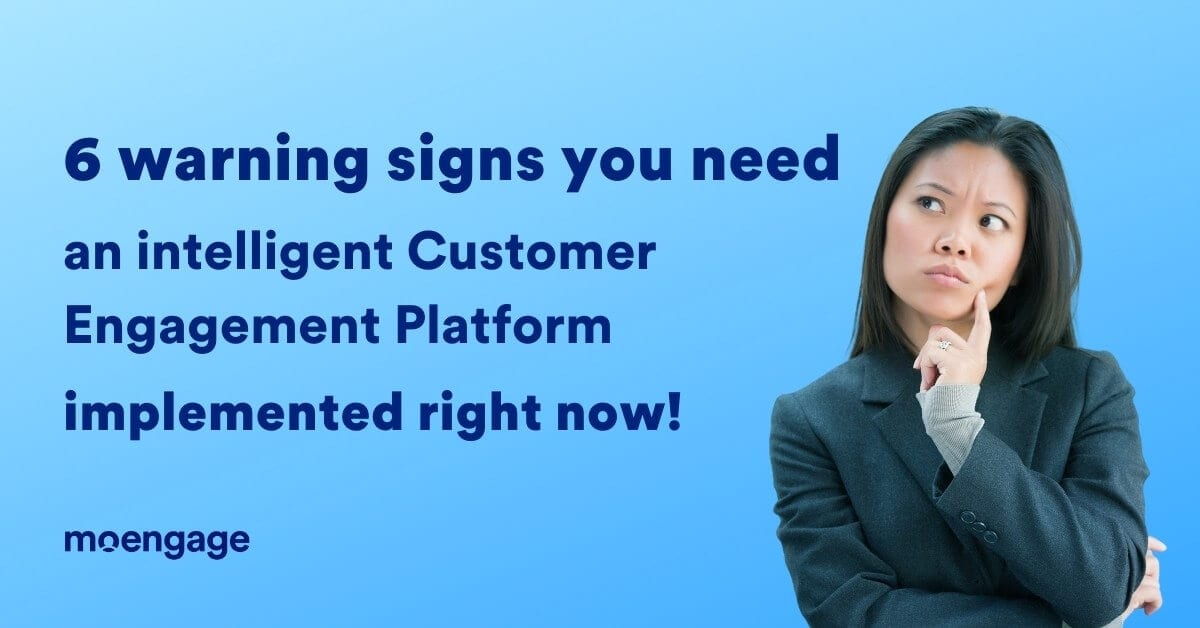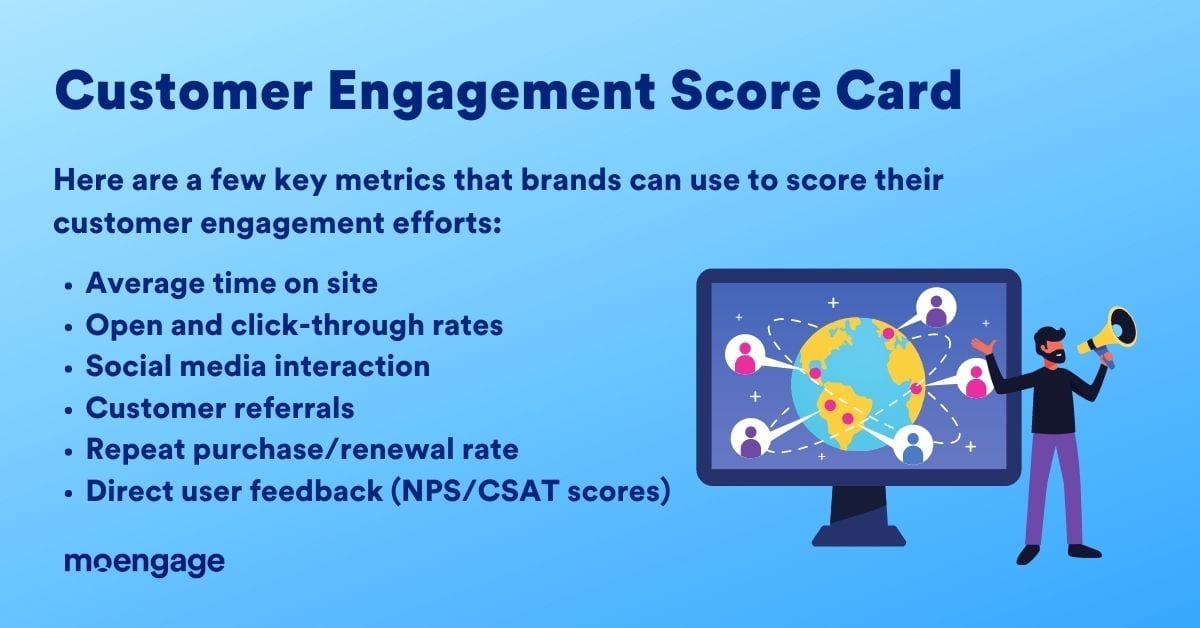Why Use Customer Engagement Platform: 6 Signs You Need One ASAP!

Reading Time: 4 minutes
Note: This article is a part of our special series focusing on the importance of an intelligent customer engagement platform and how you can choose one.
An intelligent customer engagement platform optimizes, tracks, and analyzes every customer interaction across several touchpoints. This allows the brands to provide a personalized and delightful experience to the end-user. It monitors customer journeys, figures out relevant engagement opportunities, and delivers targeted communication by deducing patterns from behavioral insights. This in turn optimizes omnichannel engagement through consistent cross-channel communication viz. email, SMS, push, live chat, social platforms, etc. The engagement platform also creates smart and relevant user segments to provide a personalized experience. Not only that, but it also frames productive workflows for better collaboration, information sharing, and increasing efficiency. As a decision-maker, it also aids in setting up goals and metrics for customer engagement campaigns and subsequently measuring the results. If you’re still on the fence regarding a customer engagement platform, check out the warning signs. If you notice more than one of these in your organization, it’s time to invest in an intelligent engagement platform.
Before we jump into the warning signs indicating your need for a customer engagement platform.
For detailed insights on choosing the right engagement platform along with exhaustive selection criteria, order our Buyer’s Guide!
While weighing the pros and cons of integrating a customer engagement platform, always factor in:
- revenue loss from missed sales opportunities
- the burden of manual data entry and workflows
- breakdown of inter-team collaboration and
- inability to provide personalized and targeted experience to each customer
Now, without any further ado, here are 6 warning signs that you need an intelligent customer engagement platform right away:
-
Inefficient and unproductive business processes
In the absence of a Customer Engagement Platform, teams, especially sales, work in silos. with communication scattered across various channels. This, in turn, affects the overall efficiency and negatively affects the sale success. A customer Engagement Platform automates most manual and repetitive processes, reducing the burden on teams by consolidating all customer interactions in one place. This leads to improved productivity, efficiency, and even revenue per salesperson.
-
Lack of data and insights
Without a tool that collects and analyzes customer data, you’re missing a clear understanding of your customer. Built-in data analysis and reporting capabilities of a Customer Engagement Platform help you better understand user behavior. Through detailed insights into buying habits, likes, and preferred communication channels, you can target customers better.
-
Lack of team collaboration and accountability
Not having a platform that enables tracking of interdepartmental functions creates silos, offering no visibility into each other’s work. In essence, teams don’t collaborate and hence don’t understand how their work impacts others and vice versa. This leads to customers and prospects being bounced around as teams are unsure of their needs. Often, due to no one taking charge, a customer leaves or a sales opportunity falls through. A Customer Engagement Platform provides the much-needed visibility into customer interaction and lifecycle, helping teams address customer needs, understand drop-offs, and improve accordingly.
-
Questionable customer satisfaction
Low satisfaction scores, increasing complaint volume and negative response to surveys might indicate a poor experience. The reason could be something as simple as not targeting preferred channels. For instance, if a customer prefers to be reached via mobile push and you send an email, it would obviously annoy the user and account for poor customer experience. Customer Engagement Platforms provide you with insight into customer preferences and also analyze what/where you’re going wrong. Such platforms allow you to target the right user segment using the right channel, improving customer satisfaction rates.
-
Untapped selling potential and opportunities
Manual tracking and nurturing of leads eventually result in the loss of sales opportunities. By leveraging the capabilities of a Customer Engagement Platform, follow-ups can be automated. Nurture programs can be seamlessly picked up through the data and insights collected on the platform, effectively restarting conversations, and adding value.
-
Scope of scalability
Given that a customer engagement platform helps in optimizing user experience, sale opportunities, team collaboration, visibility, customer targeting, etc. the question that needs to be asked is, ‘what is the scope of scaling as your business grows?’ The Customer Engagement Platforms available today are capable of growing with your business, thus scaling and adjusting to the pace of your brand’s growth.
Basic Tenets of building effective customer engagement
Now that you’re aware of the warning signs you need an engagement platform, let’s look at how you can build a framework.
Building an effective customer engagement framework is already a priority for most organizations and will continue to be in and beyond 2021. Even government organizations around the world, the US Government for example is working on improving the user experience and engagement. The US Citizenship and Immigration Services (USCIS) prioritize end-user experience by asking callers if their problems have been resolved and offering callback options.
Here are a few pointers you can utilize while crafting a winning customer engagement strategy:
- Define an ideal customer base to target all communication
- Create content based on customer history
- Create an omnichannel, definitive roadmap to improve engagement
- Personalize the customer experience
- Clearly define goals and the corresponding KPIs
- Build and share your brand voice online
As a bonus, here are some of the metrics you can measure after setting up an effective engagement framework:

Here’s what you can do next:
|













